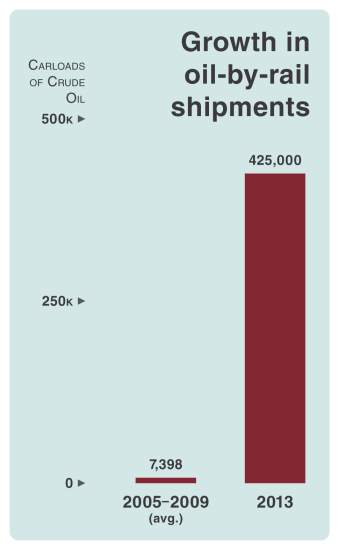Everyone’s talking about how fast crude oil-by-rail shipments have increased, but what does that really mean?

The increase has been staggering:
- In 2013, US railroads moved 11 times more crude oil than all the oil moved by train from 2005 to 2009, the five-year period before oil train shipments began to increase from historical levels.
- Railroads are now moving roughly 57 times more oil annually than they were during the period from 2005 to 2009.
- In 2013, railroads shipped an estimated 425,000 carloads of crude oil—that’s roughly 815,000 barrels per day, about the same volume as would be moved by the controversial Keystone XL Pipeline.
All data come from the American Association of Railroads report, Moving Crude Oil By Rail, published December 2013. The figures refer to carloads of crude oil that ended their journey on class 1 railroads in the US, which means that the numbers exclude oil tank cars that traveled to Canada or to destinations served by minor railroads. The figure for 2013 is the AAR’s estimate based on the first three quarters of data.

Comments are closed.